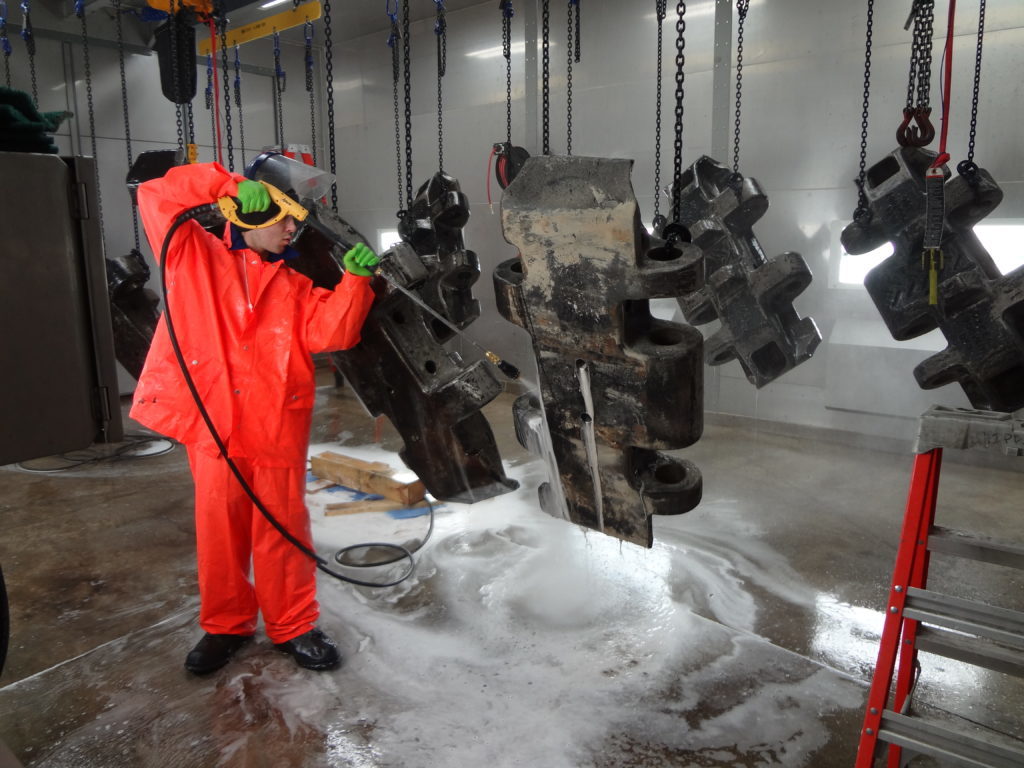
Give us a call today to learn more, and be sure to check back for more helpful tips like these. Our experts will be happy to offer more solutions, and if worse comes to worse, we buy and sell metal and steel supplies. Keep in mind that these recipes are meant for removing rust on almost anything, so if the job is too tough for the methods above, come see us at Tampa Steel & Supply. Small lengths of small chain (used to suspend the rusty parts in solution) or some other means to suspend the part to clean into the solution. Then, use a pumice stone to scrub off any rust. Mix together a paste of lemon juice and borax and apply it to the rusted area. Potatoes, which contain oxalic acid, can make an effective toxic-free rust cleaner when paired with baking soda. Oxalic acid, which is frequently used in laundry detergents and other cleaners, can eliminate rust stains.
#RUST REMOVAL HOW TO#
This combination is especially helpful when it comes to porcelain and ceramics (i.e. How to Remove Rust With Baking Soda and a Potato. Cut a potato in half and dip the end in dish soap, rub the rusted area with the potato and then set it on the metal for a few hours and scrub away! 5. Using a potato to remove rust sounds strange, but potatoes actually contain oxalic acid which creates a chemical reaction when it comes in contact with rust. Cover the rusted area with the mixture and let sit for a few hours before scrubbing it off. To remove rust, simply mix water with baking soda until a paste-like texture forms. Like vinegar, baking soda has no limit on how you can use it on. Let the mixture set for a few hours and then use the lime to scrub off the rust. 4) Next, wipe off the residue using a microfiber cloth. 3) Spray the rust remover onto the rusty spot and let it sit for around 10 minutes. 2) Mask off the area you want to work on using the painter’s tape. Skip the tequila on this one - but sprinkle salt over the rusted area and squeeze lime juice on top. 1) Start by cleaning the affected area and let it dry completely.
/homemade-rust-remover-recipes-1387936-05-a784cfa553a24566b3547b1fe265da94.jpg)
If rust has taken one of your valuables hostage, simply soak the rusty item in some white vinegar for a few hours and watch as the rust scrubs away. Mechanical processes such as scrubbing or sanding/sand blasting can be used to remove rust, but they are labor intensive, time-consuming work. Like seemingly every DIY recipe, vinegar is a key ingredient to resolving myriad household problems - rust included. How Does Rust Removal Work Just like the formation of rust, industrial rust remover acids use chemical processes to remove rust. Well, we’ve got good news for you - there are plenty of ways you can easily remove rust from your prized possessions - and better yet, you probably have everything you need to do so in your kitchen already! 1. The acetic acid in this common household product is acidic enough to dissolve rust. The thought of removing rust can be intimidating, and many of us don’t even bother trying to get rid of it because we are all under the assumption that once something rusts, it’s ruined forever. For more stubborn rust, try using white vinegar. This prevents the gel from drying out and it also ensures that the gel will continue to work until it is saturated (darker in colour).Oxygen and iron by themselves are vital for survival but put the two together and you’ll be ready to pull out your hair trying to remove rust from your favorite knife or skillet. In the case of large surfaces, you can cover the gel using plastic food film.

if a clear finish is desired, as the protective film is a hazy white colour and is hard to remove. NB: Letting the gel dry out will create a phosphating effect, leaving a protective passive film which temporarily protects the treated surface before re-corrosion and improves the adhesion of primers and coatings.Īlthough, it’s not recommended to let the gel dry out, e.g. In case of heavy rust, it might be necessary to apply the gel a second time.

Rinse off with water and treat the metal as if it was new and bare.ĥ. Aluminium, zinc and other sensitive metals may be attacked after too long exposure.Ĥ. The reaction time depends on the thickness of the corrosion layer to be treated and on the type of metal (from 30 minutes for very light corrosion to 24 hours for heavy corrosion). Let the gel settle until the desired result is achieved, but do not let the gel dry out. This could be re-used until totally saturated but the performance of the product will decrease while the product becomes darker and darker.ģ. In that case, pour the required quantity of gel in a separate clean plastic container. Small rusted parts can be dipped in the gel. Apply the gel in a thick even layer using a brush, so that the rust can be properly absorbed. using a wire brush), dirt, grease and oil.Ģ. Made from nylon fibre, impregnated with silicon carbide abrasive grains, to give a clean and smooth finish.


 0 kommentar(er)
0 kommentar(er)
